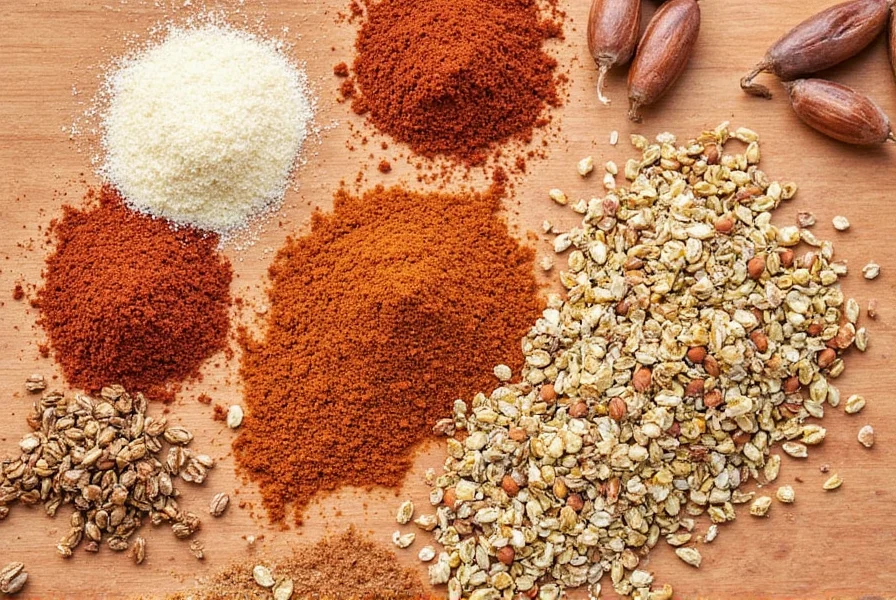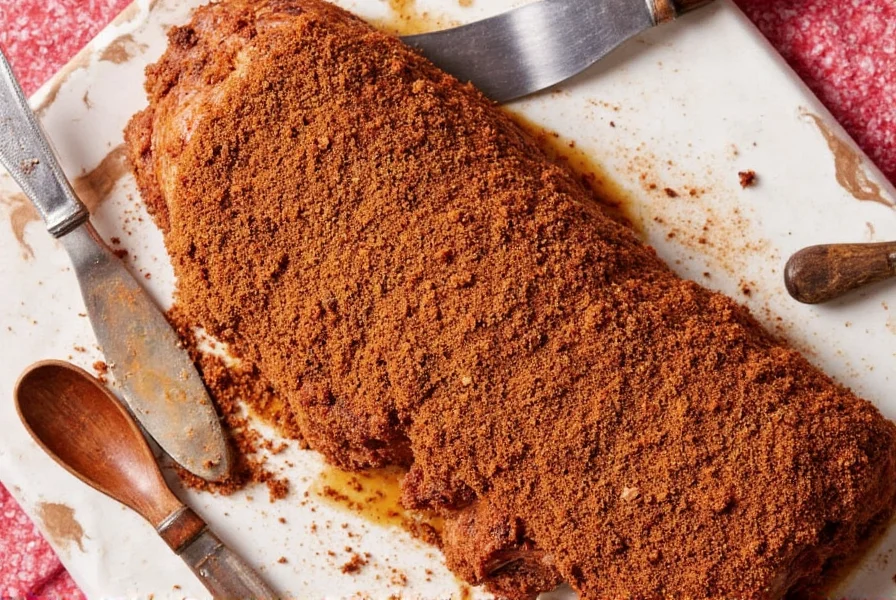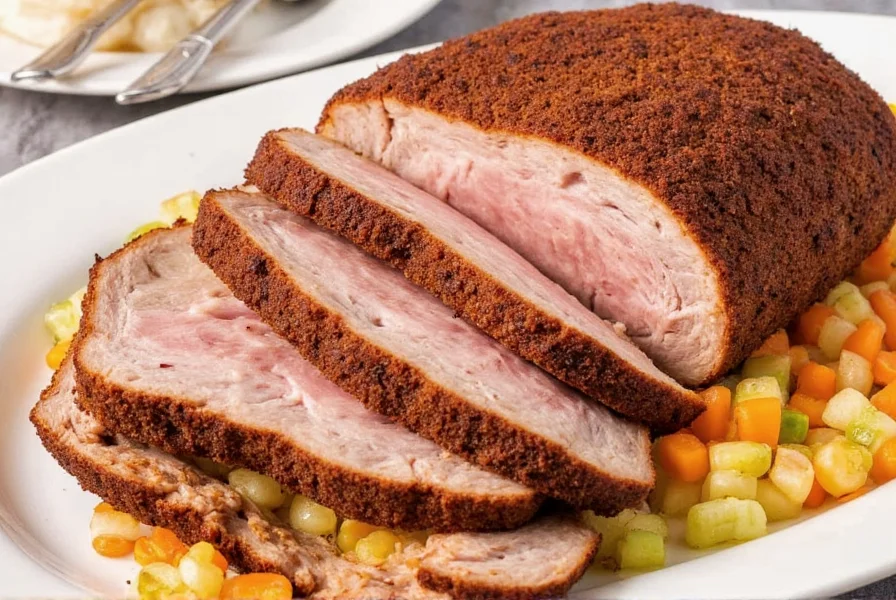Looking for the best rub for roast pork? This guide provides the top 7 expert-tested recipes with detailed ingredients, application tips, and how to choose the perfect blend for your cooking style. Whether you're smoking, grilling, or oven-roasting, these rubs will elevate your pork dishes.
Table of Contents
- Why Spice Rubs Matter for Roast Pork
- The Building Blocks of a Perfect Pork Rub
- Comparing the Top 7 Pork Rubs
- How to Apply Rubs Like a Pro
- DIY Rub Recipes: Customize Your Flavor Profile
- Buying Guide: How to Choose the Right Rub for You
- Frequently Asked Questions
- Final Thoughts
Why Spice Rubs Matter for Roast Pork
A good rub acts as both seasoning and marinade in one—coating the meat and allowing flavors to penetrate over time. When it comes to roast pork, especially cuts like pork shoulder or loin, a rub sets the stage for a deeply flavorful crust while balancing out the richness of the meat.
The Building Blocks of a Perfect Pork Rub
While every rub is unique, most great ones share a few core ingredients:
- Salt – Enhances flavor and helps draw moisture out for better sear
- Brown sugar – Adds sweetness and helps with caramelization
- Paprika – For color and subtle smokiness
- Garlic powder / onion powder – Adds savory depth
- Black pepper – Sharpens and balances other flavors
- Optional additions: chili powder, cumin, mustard powder, smoked salt, citrus zest
Comparing the Top 7 Pork Rubs
We've rounded up seven top-rated rubs for roast pork, each with its own character and ideal use case. Here's how they stack up:
| Rub Name | Main Ingredients | Flavor Profile | Best For | Price Range |
|---|---|---|---|---|
| Carolina Gold | Mustard powder, brown sugar, paprika, black pepper | Tangy, sweet, slightly spicy | Slow-smoked pork shoulders | $8–$12 |
| Memphis Magic | Garlic, onion, paprika, chili flakes, salt | Earthy, rich, bold heat | BBQ ribs or pulled pork | $9–$14 |
| Smoky Bourbon Blend | Bourbon-infused brown sugar, hickory-smoked paprika, sea salt | Deeply smoky, slightly sweet, woody | Indoor oven roasts or grill | $10–$15 |
| Texas Heat Rub | Cayenne, black pepper, garlic, smoked paprika | Spicy, savory, punchy | Hot-and-fast roasting | $7–$11 |
| Island Jerk Style | Allspice, thyme, scotch bonnet, cinnamon | Exotic, fruity, peppery | Jerk-style roasts or tropical fusion dishes | $9–$13 |
| Mediterranean Herb Mix | Oregano, rosemary, fennel seed, lemon zest | Fragrant, fresh, herby | Roasted pork loin or kebabs | $10–$16 |
| Sweet & Spicy Classic | Brown sugar, cayenne, chili powder, garlic | Perfect balance of sweet and fire | Any style roast, family-friendly | $6–$10 |
How to Apply Rubs Like a Pro
Applying a rub isn't just about slapping some spices on meat. It's a technique! Here's how to do it right:
- Dry the meat thoroughly – Pat down the roast with paper towels to remove excess moisture.
- Apply generously – Don't be shy! Use around 1 tablespoon per pound of meat.
- Rub it in! – Massage the mix into the surface using circular motions for even coverage.
- Rest time matters – Let the seasoned meat rest uncovered in the fridge for at least 1 hour (up to 24 hours for maximum flavor).
- Cook low and slow – Especially for fatty cuts like pork shoulder, this builds tenderness and infuses the rub deeper into the meat.
DIY Rub Recipes: Customize Your Flavor Profile
Want full control over your rub? Make your own! Here are a couple of crowd-pleasing blends:
Classic Sweet & Smoky Rub
- 2 tbsp brown sugar
- 1 tbsp smoked paprika
- 1 tsp garlic powder
- 1 tsp onion powder
- 1 tsp salt
- ½ tsp black pepper
- ½ tsp dry mustard (optional)
Spicy Island Rub
- 2 tbsp allspice berries (ground)
- 1 tsp crushed red pepper flakes
- 1 tsp thyme
- 1 tsp salt
- Zest of 1 lime
- ½ tsp ground cinnamon
Buying Guide: How to Choose the Right Rub for You
Shopping for premade rubs can be overwhelming. To help you find your perfect match, here's what to look for:
Key Features to Check
- Ingredients List – Shorter is usually better. Avoid artificial additives if possible.
- Flavor Intensity – Is it mild, medium, or hot? Match it to your preference and audience.
- Application Suitability – Some work best for smoking, others for grilling or oven roasting.
- Grind Texture – Coarser rubs give more crunch; finer ones melt into the meat better.
- Storage Life – Natural ingredients may shorten shelf life, so buy what you'll use within 6–12 months.
Top Picks for Different Needs
Best All-Rounder: Sweet & Spicy Classic Rub
- Great for beginners and families
- Balanced flavor without being too overpowering
- Ideal for quick weeknight roasts
Best for Smokers: Carolina Gold
- Enhances pit-smoked flavor beautifully
- Works wonders on pulled pork sandwiches
- Perfect for backyard BBQ enthusiasts
For Bold Flavors: Texas Heat Rub
- Spice lovers' dream
- Excels in high-heat roasting
- Adds serious kick without masking meat flavor
Most Unique: Island Jerk Style Rub
- Great for those who want something exotic
- Delicious with grilled pineapple or mango salsa
- Perfect for themed dinners or potlucks

Frequently Asked Questions About Pork Rubs
What is the best rub for roast pork loin?
For pork loin, which is a leaner cut, we recommend the Mediterranean Herb Mix or the Sweet & Spicy Classic rub. These provide flavor without overwhelming the delicate meat. The Mediterranean blend with oregano, rosemary, and lemon zest complements pork loin beautifully, while the Sweet & Spicy Classic offers a family-friendly balance that works well with this cut.
How long should I leave a rub on pork before cooking?
For best results, let the rub rest on the pork for at least 1 hour in the refrigerator (uncovered). For maximum flavor penetration, especially with fattier cuts like pork shoulder, you can leave it for up to 24 hours. This resting time allows the salt to work its magic and the flavors to penetrate the meat.
Can I use the same rub for both pork shoulder and pork loin?
While you can use the same rub on both cuts, different rubs work better with each cut due to their different fat contents and textures. Richer, spicier rubs like Texas Heat or Carolina Gold work exceptionally well with fatty pork shoulder, while leaner pork loin benefits more from milder, herb-forward rubs like the Mediterranean Herb Mix. However, the Sweet & Spicy Classic is an excellent all-rounder that works well with both cuts.
Do I need to add oil to my dry rub for pork?
Adding oil to a dry rub is optional but can help the spices adhere better to the meat. A light coating of olive oil, mustard, or even mayonnaise before applying the rub can create a better crust during cooking. However, many pitmasters prefer applying dry rubs directly to properly dried meat for optimal bark formation, especially when smoking or slow-roasting.
What's the difference between a dry rub and a marinade for pork?
A dry rub is a mixture of dry spices applied directly to the meat's surface, creating a flavorful crust. It works primarily on the exterior but can penetrate slightly over time. A marinade contains liquid ingredients (like acids, oils, and wet seasonings) that both flavor and tenderize the meat more deeply. Dry rubs are quicker to apply, create better crusts for roasting/grilling, and don't dilute flavors like liquid marinades sometimes can.
Can I make my own rub instead of buying pre-made ones?
Absolutely! Making your own rub gives you complete control over ingredients and flavor profiles. Our DIY section provides two simple recipes (Classic Sweet & Smoky and Spicy Island Rub), but you can customize endlessly based on your taste preferences. Homemade rubs avoid preservatives and artificial ingredients found in some commercial blends, and they're often more cost-effective in the long run.
How much rub should I use per pound of pork?
As a general rule, use about 1 tablespoon of rub per pound of pork. For larger cuts like pork shoulder, you might want to be slightly more generous (up to 1.5 tablespoons per pound) since these cuts benefit from a thicker crust. The key is to cover the entire surface evenly without creating thick clumps that might burn during cooking.
Should I rinse off the rub before cooking pork?
No, you should never rinse off a dry rub before cooking. The purpose of the rub is to flavor the meat and create a delicious crust during cooking. Rinsing would remove all the seasoning you've applied. Simply apply the rub, let it rest for the recommended time, and cook as directed. The only exception might be if you've applied an excessive amount that's creating clumps, in which case you could gently brush off the excess before cooking.
Final Thoughts
Choosing the right rub for roast pork isn't just about picking a bag off the shelf—it's about crafting an experience. Whether you go store-bought or DIY, the key is finding a blend that complements your meat and excites your taste buds.
Now that you're armed with knowledge, go ahead and experiment. Try mixing two rubs together, or adding a splash of vinegar or oil to create a paste. The goal is to build layers of flavor that elevate a humble roast into something unforgettable.












 浙公网安备
33010002000092号
浙公网安备
33010002000092号 浙B2-20120091-4
浙B2-20120091-4